
Running a successful software development company takes more than simply having a great product. To keep your projects profitable and identify areas of growth, you need to understand, track, and analyze your resources and performance regularly.
Read on to learn how to make money in software development projects and maximize your revenues with the help of a few helpful metrics and analysis techniques.
Key Metrics for Software Development Projects
Metrics are health indicators of different parts of your business. While there are hundreds of them, you need to track only 5 following types of metrics to evaluate business performance and get informed on how to make money in software development projects.
1. Cost of development
To ensure the profitability of your software development business, you need to understand time and financial expenses across every part of your projects. Understanding the design, development, testing, delivery, and maintenance costs allows you to find areas of improvement, reduce your expenses, and increase your margins. Tracking development costs is critical to the success of your software development company because it will help you understand where you can make changes to improve profitability without jeopardizing the quality of your product.
- Did you estimate the time and cost of your last software development project?
- How much time did the last project take overall? How much did it cost?
- What is the average time and cost per feature?
2. Revenue
The most basic metric is revenue — how much money you make from your projects. Some companies charge by the hour, while others charge by the project or per user on a subscription basis. Regardless of your pricing model, tracking revenue accurately is important so that you can forecast future sales and understand where your money comes from.
- How much profit does your company generate?
- Which activities are the most profitable?
- Which activities are the most unprofitable? Why?
3. Time to market
Time to market (TTM) refers to the length of time from the conception of a product to its delivery. Time to market is vital because the faster you field a product, the more market share and profits it’s able to capture. A study by McKinsey & Co reveals that products that are six months late to market generate 33% less profit over five years. At the same time, products released on time, but 50% over budget, cause profit cuts by only about 4%.
- How much risk does the scope of the project contain?
- How much product innovation is required for it to stand out from the competitors?
- Is your project running according to the schedule?
- How often do actual activity times exceed the estimates?
4. Customer satisfaction
Customers are the backbone of every business, and if you don’t have satisfied customers, you won’t be able to sustain your business. Understanding the degree to which customers are satisfied with your product and services will help you make the necessary changes to improve customer satisfaction. Customer satisfaction is generally measured based on a majority of different criteria, including the ease of use of your product, customer service satisfaction, and the return on investment of your product.
- Do you regularly check your customer base?
- Do you track the customer retention rate?
- Do you regularly share updates backed up with data?
5. Employee productivity
The last metric you will want to track is employee productivity. This metric focuses on the level of productivity of your team members. Understanding the productivity of your team members will help you make adjustments that will increase productivity. Tracking employee productivity will help you make adjustments that will improve productivity and help your software development company grow.
- Do you track project velocity (also known as burn rate)?
- Do your employees track their working time against tasks?
- Do they meet estimates and deadlines?
- Do you track developer productivity?
- Do you have a leave management system in place?
How to Measure Profitability of Software Development Projects
Luckily, most business productivity and profitability metrics can be easily calculated if you have accurate records of how your teams use their working time. When you have it, all the profitability math becomes a breeze.
1. Track utilization of working time
Without time tracking, you can’t track work progress and costs, so it’s important that your team members record time against activities assigned to them and update their status. Most employees feel resistant to filling out timesheets and logging their activities accurately down to the minute. Choose a time tracking solution with various time tracking tools such as timesheets, calendars, browser extensions, and software integrations.
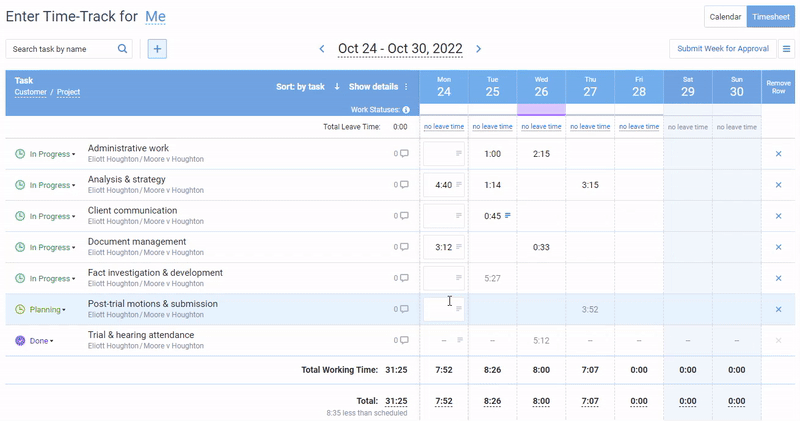
Track time in actiTIME by entering task duration or logging the start and end times of tasks using an online timesheet or weekly timeline view
2. Review revenues
As your project unfolds, you may want to review accumulated billable amounts and share them with your customers. With time tracking data, billing rates, reports period, and data sorting settings, you can make it as detailed as you need. As every type of work has its own billing rate, you can build your report around these rates or choose a different report layout.
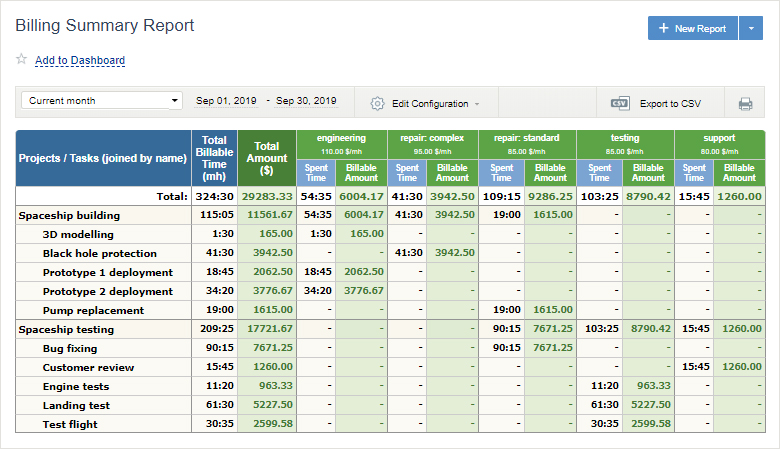
Review revenue across clients, projects, and activities in actiTIME
3. Monitor profitability
Regular profitability analysis allows you to identify unprofitable activities, projects, and clients and take timely measures to investigate, fix issues, review, or even stop certain activities and partnerships. As long as you have the time spent across tasks and projects, work rates of your team members, and billing rates for your clients, the math is easy and straightforward, with the right tools, comprehensive, and compelling.
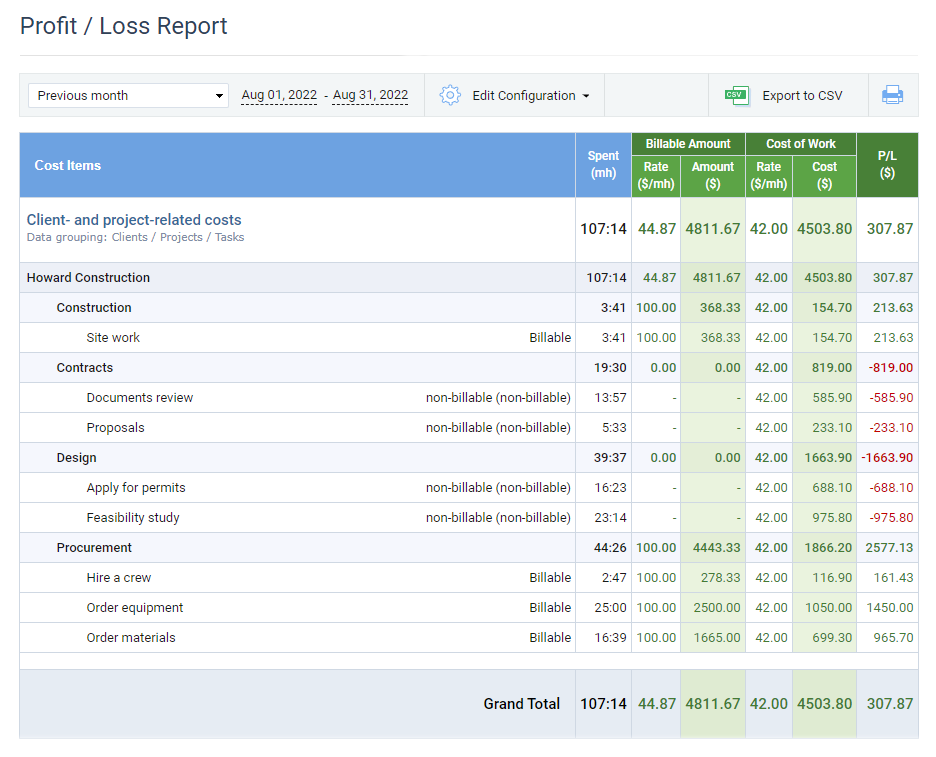
Identify unprofitable projects and activities in actiTIME
4 Tips on How to Make Money in Software Development Business
As long as time and money are interconnected, so are productivity and profitability. Here are a few tips on how to track and improve the productivity of your software development company.
1. Review business health
There are thousands of business metrics that could give you a 360-degree overview of your business health, but in reality, you don’t need most of them. If you have a system for tracking time and costs, you can build charts and other visuals displaying productivity trends. For example, in actiTIME, you can set up custom widgets and see the data updated in real time.
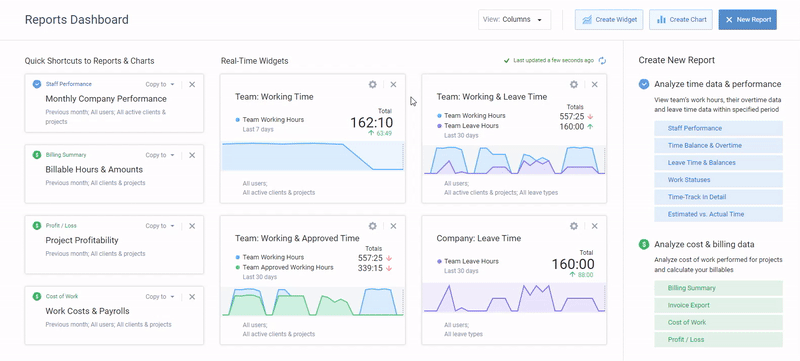
Customizable widgets and reports in actiTIME displaying real-time statistics across selected users, projects, and periods
2. Prevent under- and overbooking
Minimize chances of underloaded, overwhelmed, and burnt-out employees by reviewing the availability of every team member. Assign work to the employees according to their availability. Distribute clients, projects, and tasks to give team members access to their assignments.
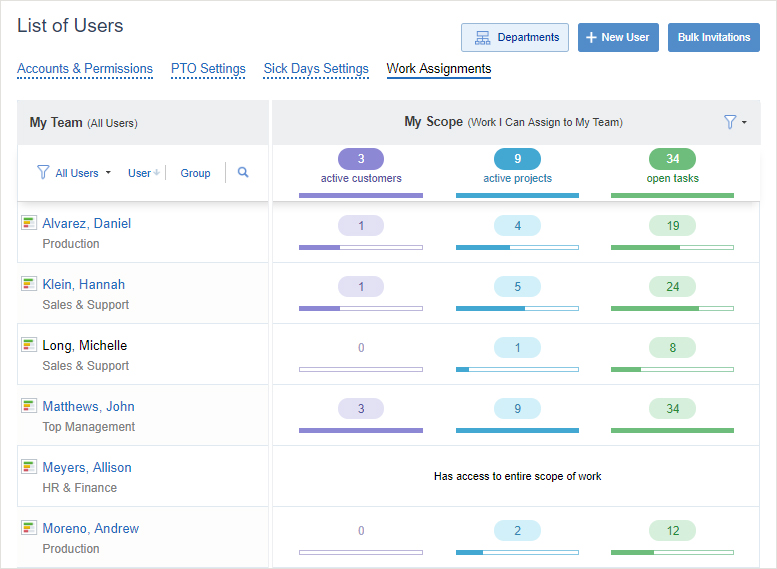
See who is under- and overbooked and assign a fair amount of work in actiTIME
3. Identify blockers
When work is in progress, you need to track its progress regularly and look out for bottlenecks. Kanban boards are a great means of work progress visualization as they display current activity statuses and allow you to check with project schedules to identify blockers. With task management software like actiTIME, work tracking becomes a breeze.
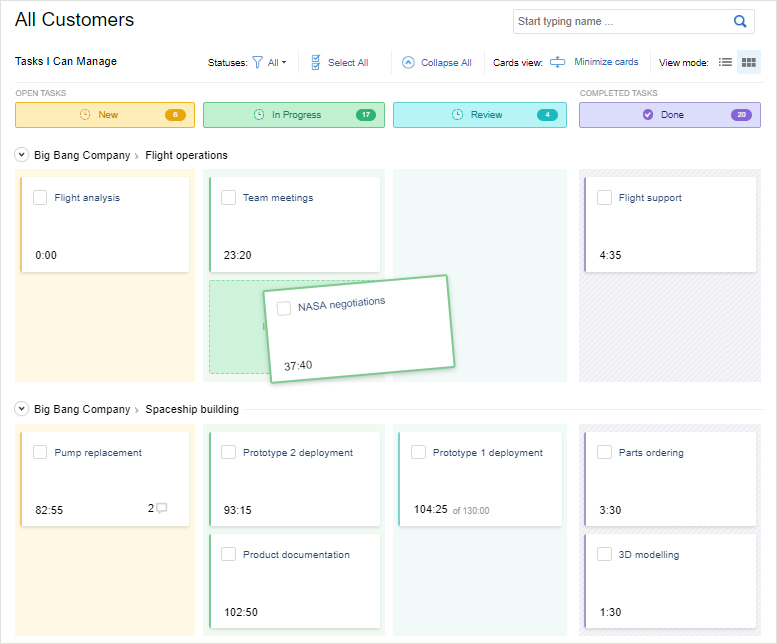
Kanban board in actiTIME, where you can click on any task to review spent hours against estimated values, deadlines, comments and other project activity metrics
4. Review work status
Are your projects going according to the schedule? Does your team accomplish work at estimated hours or spend more time driving your projects, deadlines, and costs sidetrack? If you have a task management system in place, which stores all the budgets and deadlines and tracks the actual expenses, chances are you can pull a report displaying the variance between the estimates and the reality.
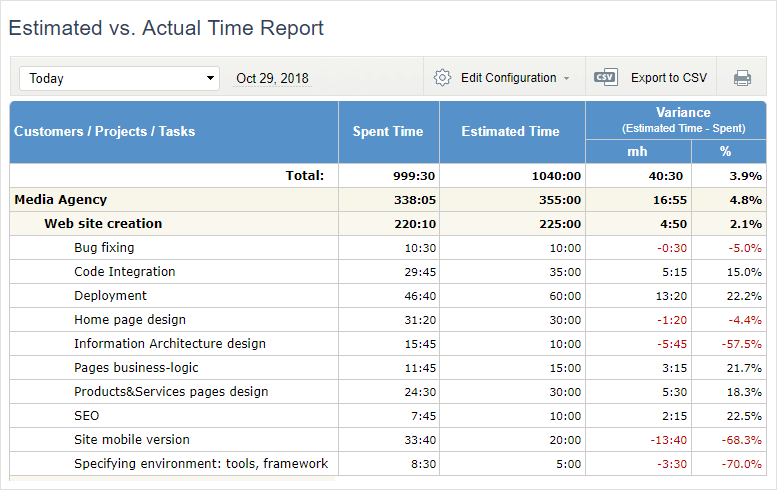
Track project progress compliance with the project schedule in actiTIME
Ready to Maximize Your Software Profits?
So, how to make money in software development projects and boost their profitability?
Ultimately, it all boils down to effective resource planning and management, which leads to higher productivity, fewer time expenses and costs, and, therefore, increased profits. Luckily, resource management can be improved, and problematic areas of business can be identified – all by the use of time tracking.
Having hundreds of software development companies and being one ourselves, we recommend actiTIME – time and project management software, which supports Agile, Waterfall, and other methodologies and offers an extensive set of developer software integrations.

actiTIME allows tracking using a timesheet, calendar, browser extension, and mobile app. It provides helpful user interfaces displaying estimates and deadlines, custom task parameters, and more. At the same time, managers get access to granular work scope, project, cost management, leave tracking, and user permission settings – this is not the exhaustive list of things to fine-tune in actiTIME for simple and handless project tracking.
Give it a try – start with a free 30-day trial (no credit card required) and continue with a free plan anytime.













































